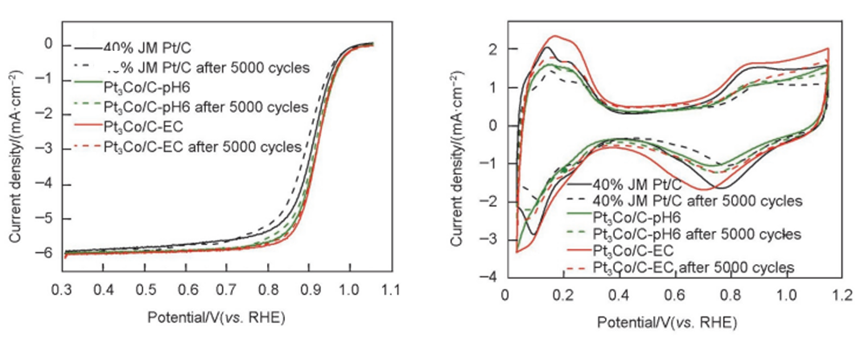Pt-based alloys are the optimal electrocatalysts for oxygen reduction reaction(ORR) currently. Dealloying of Pt-based alloys has shown to be an effective approach to improving ORR activity. Electrochemical dealloying is controllable for morphology by changing electrochemical parameters but is difficult to scale up due to complex operation and energy consumption. Chemical dealloying is suitable for a large scale but it is not easy to control the morphology because highly corrosive acids(HNO3 or H2SO4) are commonly used. In this work, a facile chemical dealloying method for Pt3Co/C has been employed to synthesize electrocatalysts for ORR using weak acids and buffer solutions of different pH, which could slow down the dissolution rate for Co atoms and increase the diffusion time for Pt atoms to improve ORR activity. It can be observed that the mass activities(MA) of the Pt3Co/C alloy after dealloying with H3PO4 and NaHP2O4/Na2HPO4 buffer solution of pH=6 are close to that after electrochemical dealloying process, and are more than two times that of commercial Pt/C. In addition, Pt3Co/C after dealloying with a buffer solution of pH=6 only showed a slight degradation in the half-wave potential and electrochemical surface area(ECSA) after stability test for 5000 cycles, which is more stable than commercial Pt/C. It shows that by controlling pH of the solvent, the ORR activity can be further increased. This facile approach provides a new strategy to control morphology of Pt-based electrocatalysts by chemical dealloying, which can contribute to promising application for cathodic electrocatalysts design of proton exchange membrane fuel cells (PEMFCs).
https://doi.org/10.1007/s40242-021-1238-8
